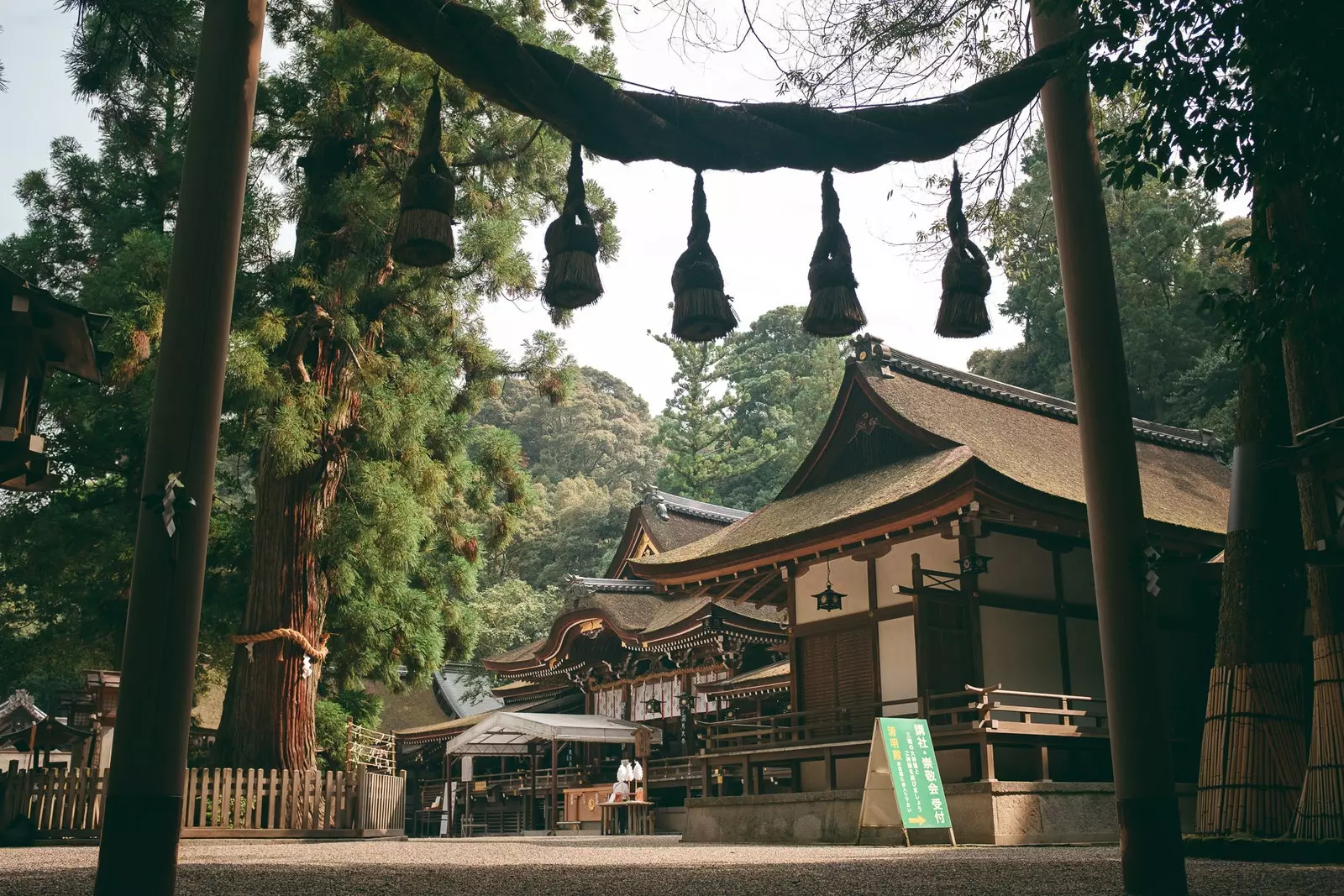
Discovering the Kii Peninsula, the authentic spiritual heart of Japan
All they say about Japan It is true and it meets all the conditions to enjoy an ideal vacation. It is one of the safest and cleanest countries in the world , the food there is exceptional and the Japanese are known for their most gracious hospitality towards all who come from abroad.
Japan is vibrant, fascinating, magical ... A crossroads where the most cosmopolitan cities converge, with a deep respect for history and tradition. Just a step away from the bustling cities where neon reigns, is the brand new kii peninsula , an area south of Osaka considered as the real spiritual heart of japan . And we refer to it as spiritual because for centuries it was the crossroads of ancient paths, of pilgrimage of samurai and emperors, which ran along the route known as Kumano Kodō.
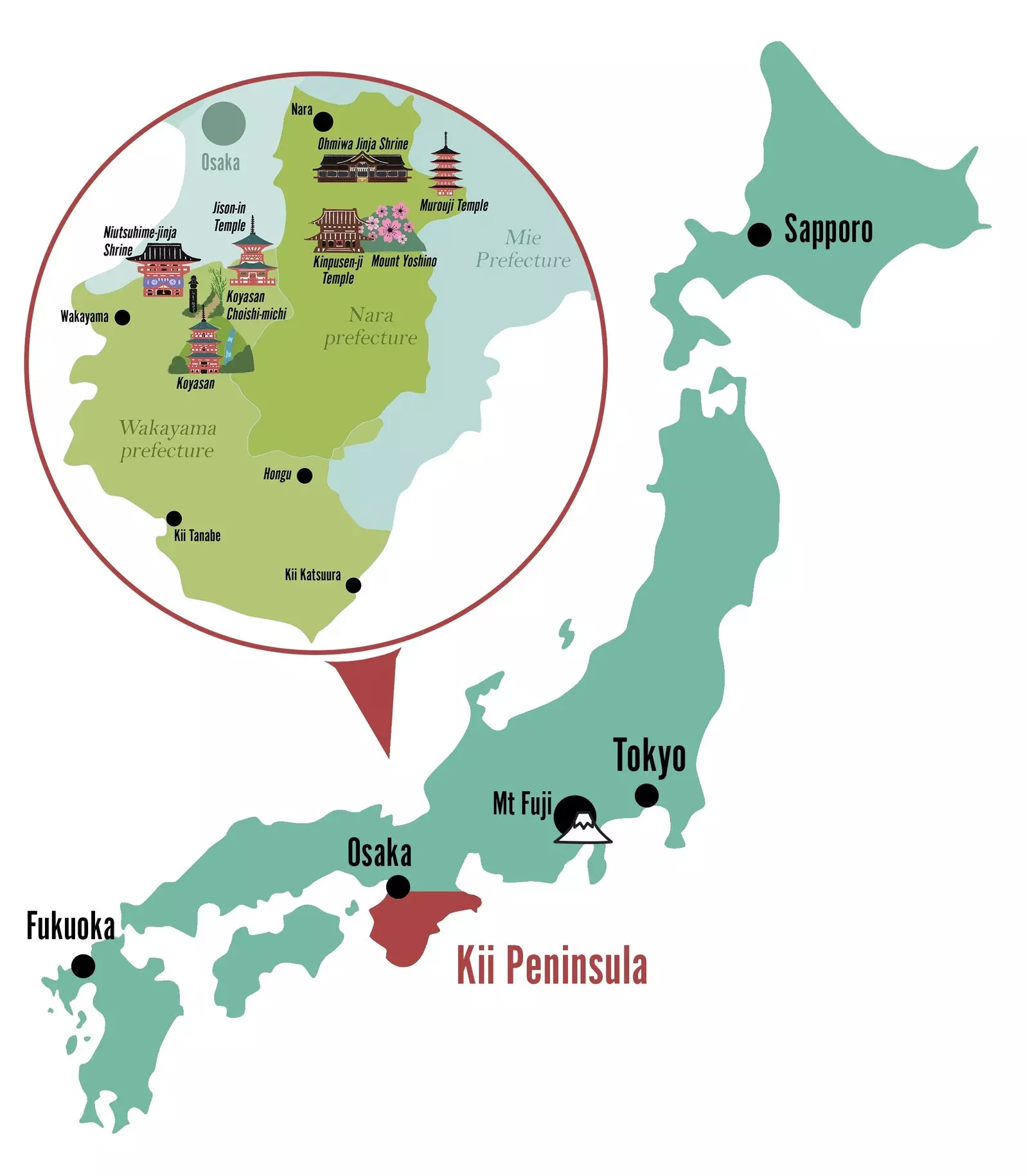
Discovering the Kii Peninsula, the authentic spiritual heart of Japan
Today these are no longer the ones who go through their impressive landscapes, sacred mountains and ancient temples , but modern pilgrims and travelers, dressed in sportswear, electronic gadgets and cameras, in search of something that few can offer: authentic natural beauty and one of the most genuine places in the country . Such is its importance that it is the only pilgrimage route, along with the Camino de Santiago, considered a World Heritage Site by UNESCO.
When you embark on a tour of the Kii Peninsula, you do so for the Wakayama and Nara prefectures , historically cultural, religious and political centers of the country. Both are a stone's throw from other prefectures like Osaka and Kyoto and well connected to the train network Japan Rail, Kintetsu and Nankai . And, in addition, they are waiting for us to discover them. Ready for the trip?
WAKAYAMA PREFECTURE
They say that it is one of the brightest hidden gems in Japan and it is still unknown to many visitors. Others haven't even heard of it . How is it possible? Incentives are not lacking. It offers outdoor activities, quiet experiences and to connect with oneself , mountainous landscapes that leave you breathless and a most interesting cultural and religious past. Located south of Kyoto and exciting Osaka, Wakayama Prefecture is the perfect place to find a Japan of yesteryear, a world straddling a mystical and sacred Japan and all the charm of its feudal past.
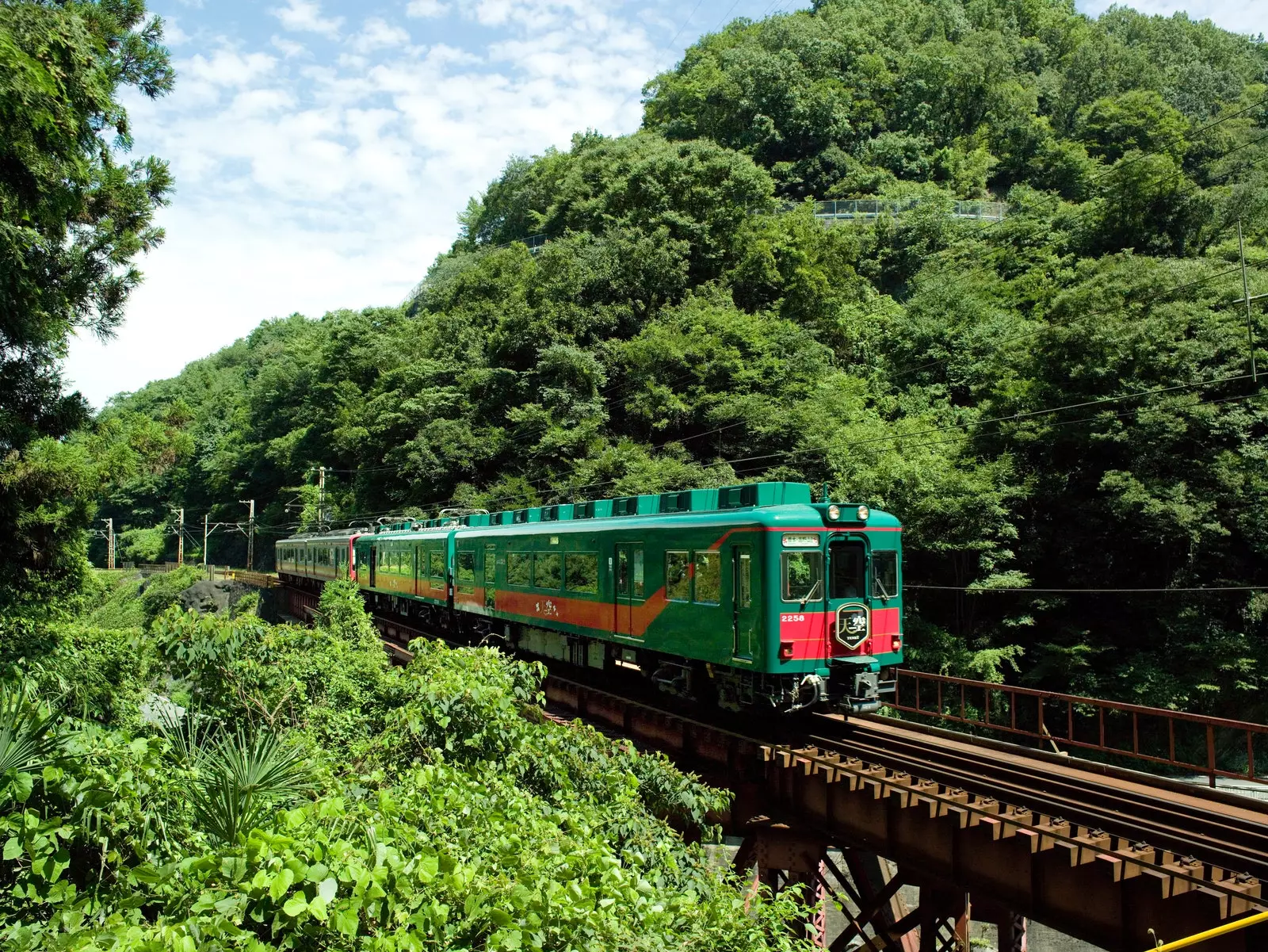
Tenku tourist train
The trip that connects the city of Osaka and Nara with these World Heritage Sites becomes quite an experience. The last 20 kilometers, from Hashimoto Station to Koyasan , are made on board the Tenku tourist train , specially designed to enjoy the views, with larger than normal windows and the seats placed facing them. In a dark green color adorned by fine red lines, almost blending into the surroundings, this train runs through places of unusual natural beauty, surrounded by mountains, until it reaches its destination, Gokurakubashi station . It's time to get on the cable car that will ascend to the last stop of the Koya line, at 867 meters high. We will have reached Koyasan.
But talk about Koya-san is to make it one of the most beautiful and sacred retreats in Japan. Almost hidden from view on the slopes of Kansai Mountain, it has remained since time immemorial as the place chosen by Kukai, the founding monk of the esoteric Shingon sect of Buddhism , to establish a monastery there. After his death (or, rather, his "state of eternal meditation") in the year 835, he became known as Kōbō Daishi Kukai . Since then, it has been one of the main pilgrimage routes in the country due to its numerous temples, which in its day numbered more than 2,000. In 2015, the World Heritage Site celebrated its 1,200th anniversary.
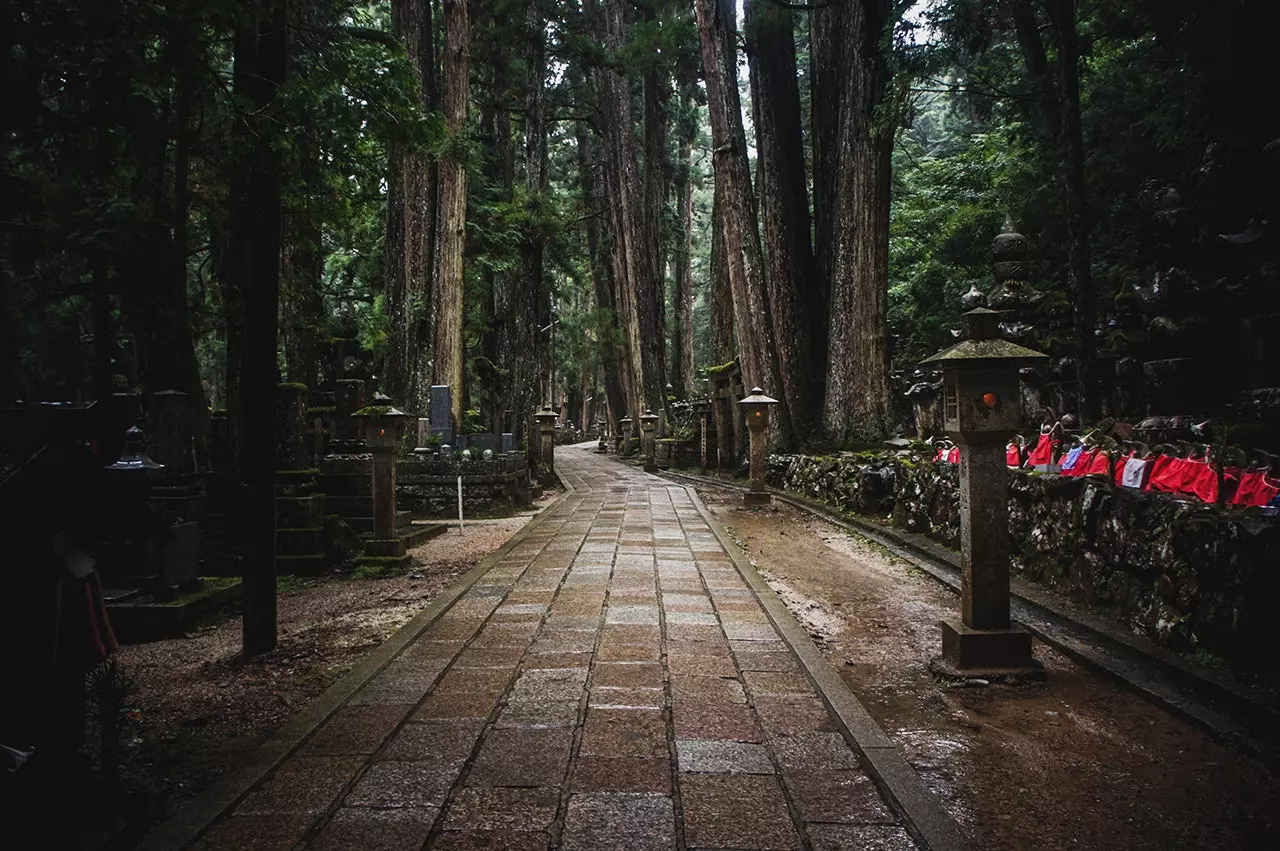
Okuno-in
Spirituality is always present. You can't leave without taking a walk through Okuno-in, the holiest place in the compound because it is there where the mausoleum of Kōbō Daishi Kukai lies . It is a cemetery with beautiful tombs covered with moss, many dedicated to Japanese personalities such as poets, actors or shogun (feudal lords). Among the temples is Kongobu-ji . It is the most important and head of the entire enclosure. In it, on beautiful sliding doors, Kukai's journey to China and the opening of Koyasan are depicted . also hides Banryutei, the largest rock garden in Japan, with stones brought from Shikoku arranged on almost white sand , which represent dragons coming out of the clouds. The colorful will catch your attention Konpon Daito pagoda of the temple complex Danjō Garan , also designed by Kōbō Daishi Kukai, as well as the imposing entrance to Koyasan, the Daimon gate.
Beyond visiting it, many recommend staying the night, because today it continues to operate as a Buddhist retreat, offering visitors a memorable experience . 51 of them offer accommodation in the temple itself, known as Shukubo , not only to know how the life of the Shingon monks , but to be part of it, getting up at 6 in the morning to meditate with them, learning sutra calligraphy or trying their tasty vegetarian cuisine. Many of the temples also have public toilets , perfect for relaxing after a day discovering all the secrets of one of the jewels of Japan.
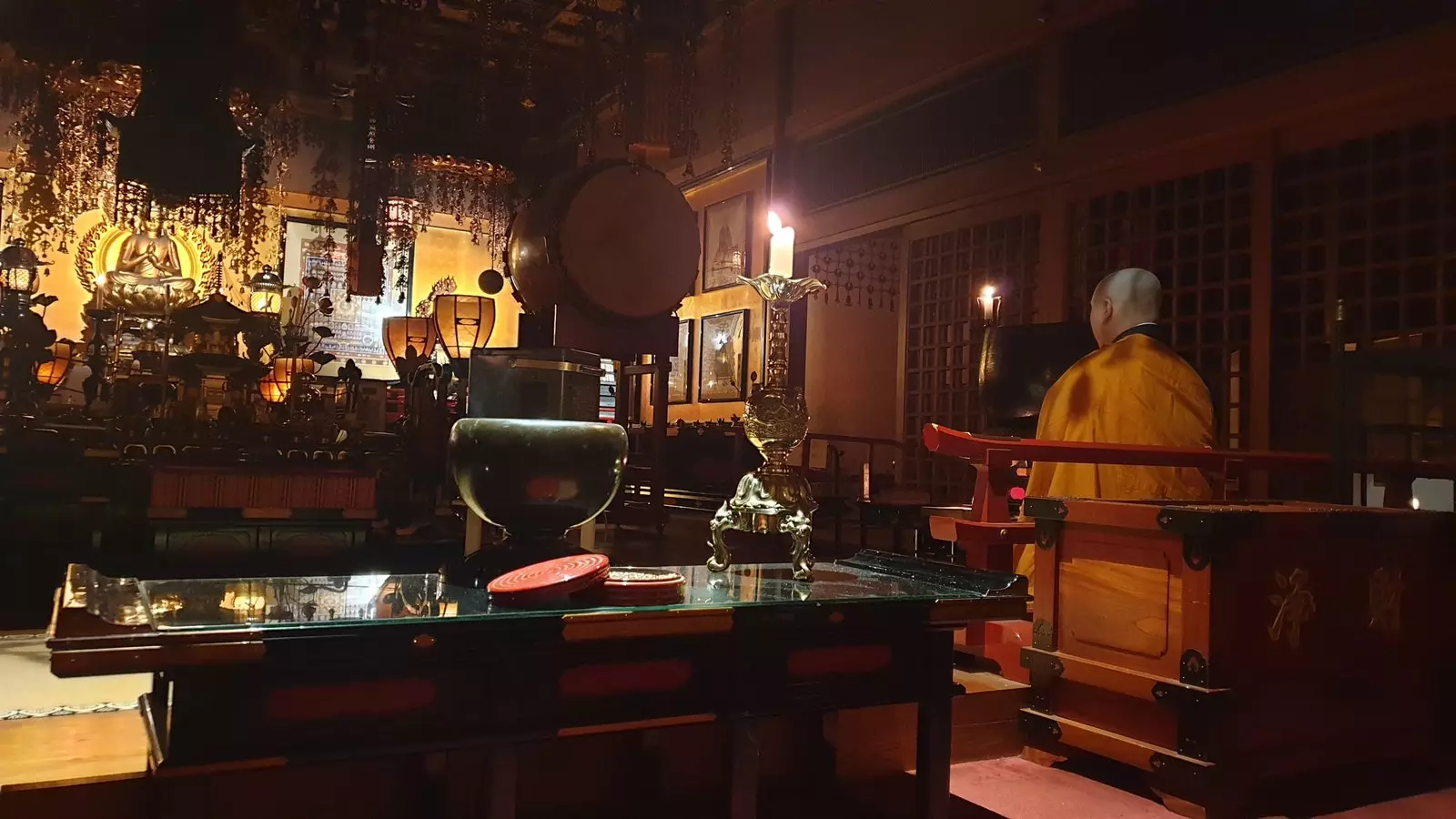
Shukubo Meditation Experience
Vegetarianism is the basis of the diet of the Shingon monks and it is another of the great attractions of Wakayama, the shojin ryori , which literally means devotional cooking . It consists of tasty and carefully prepared recipes that surprise even the most skeptical, as far as vegetarianism is concerned. Its specialties are gumadofu, a type of tofu made from sesame paste, and koyadofu, which is made from freeze-dried tofu.
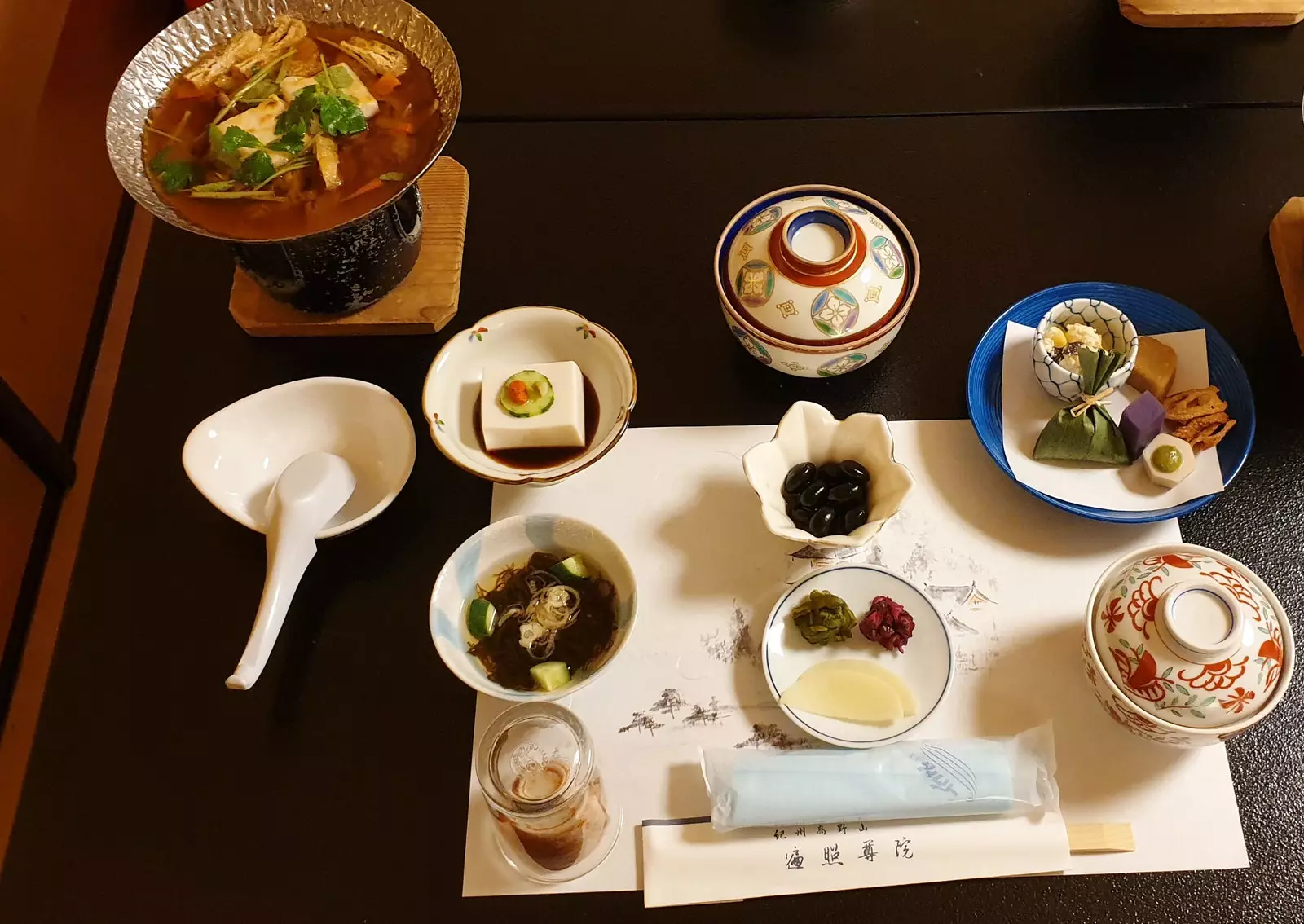
shōjin ryori
One cannot leave Japan without discovering it. In addition to the temples, you can try sesame tofu at Kadohama Goma Tofu Sohonpo , a restaurant a few steps from the Daimon gate, where this product,** winner of the Monde Selection Gold for 10 consecutive years, is the star**. It is a very nutritious dish, which is made with white sesame seeds, spring water and kudzu . can be ordered in a kaiseki menu where they prepare it in different textures and serve it with different dressings and sauces, both in a hot pot during the winter months, and take it home in small packets ready to taste.
Although Koyasan is the most important center of Shingon Buddhism and a spiritual reference point, Wakayama Prefecture hides many more treasures Y an impressive network of pilgrimage routes to other equally important temples and sanctuaries . In the temple Niutsuhime-jinja , one of the best kasuga-style buildings, you can visit the deities enshrined as protectors of the Koyasan complex.
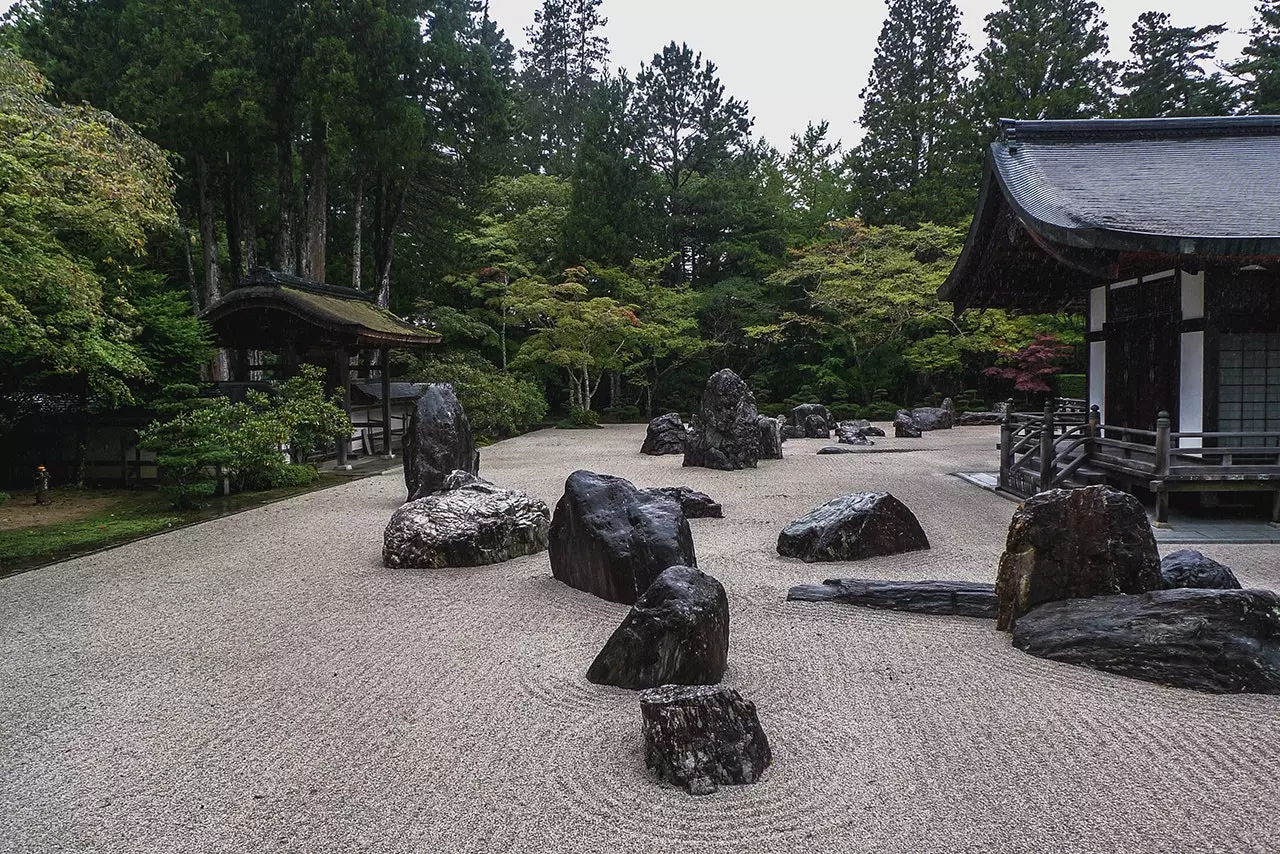
kōgobuji temple
At the foot of Koyasan, in Kudoyama , is found the Jison-in temple , a perfect example of Buddhist architecture with something that draws attention: the multitude of female breasts as an offering, which have become a symbol of the temple. According to legend, this was where the mother of Kōbō Daishi Kukai . Since women were not allowed to enter Koyasan until the 19th century, the Kōbō Daishi Kukai I walked 20 kilometers to visit her and I did it 9 times a month. Hence the city of Kudoyama has the name of 'the mountain of the nine times' . A visit to this area would be incomplete without getting lost along the way Koyasan Choisi Michi , a 20-kilometer route -like those walked by Kōbō Daishi Kukai-, which connects this area with the Okuno-in cemetery.
NARA PREFECTURE
Many have only traveled to the capital, specifically to the nara city . In anyone's imagination, when you talk about Nara, claims like the Todai-ji Temple and the pavilion housing the Great Buddha (Daibutsuden), the largest in Japan , or the sika deer, messengers of the gods for Shintoism. But there is much more. Beyond the capital of Nara, Nara Prefecture can boast a history that makes it the cradle of the Japanese Government . Formerly known as yamato , was selected in 710 to locate there the capital of Japan, the city of Heijo-kyo Nara today. It was precisely here, where many foundations of Japanese culture and customs were forged...
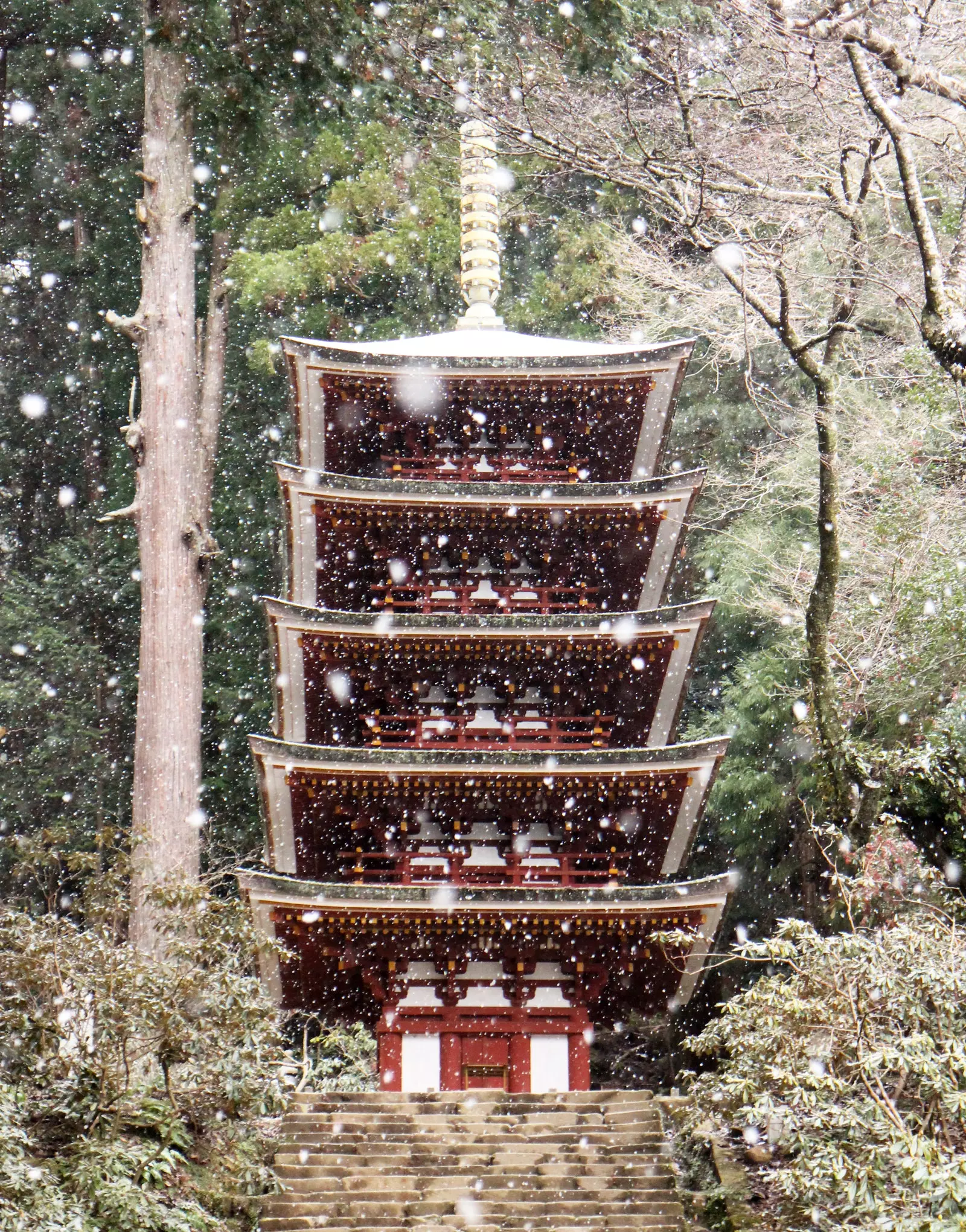
Historically linked with Koyasan, there is a small area of Uda City, known as Murouji
We will thus arrive at a small area of Uda City, the Murouji temple, located in the eastern part of Nara prefecture. This temple is famous for its beautiful five-storied pagoda, but it is also known as "Koyasan for women" (Onnin Koya), because women were not allowed to visit Koyasan until the 19th century, so they visited this one instead, also from the Shingon branch of Buddhism.
One of the most special areas of Nara is the Mount Yoshino . Located in the center of the prefecture, it is one of the best places in Japan to watch the sakura or cherry blossom . In Yoshino there are about 30,000 cherry trees that, when they bloom, dye the entire landscape in shades of pink from the base to the top of the mountain. It is worth climbing to the top and enjoying the views in the Hanayagura Observatory or Yoshimizu-Jinja Temple . The plan? Let yourself be fooled by an almost aerial panorama of this unparalleled landscape.
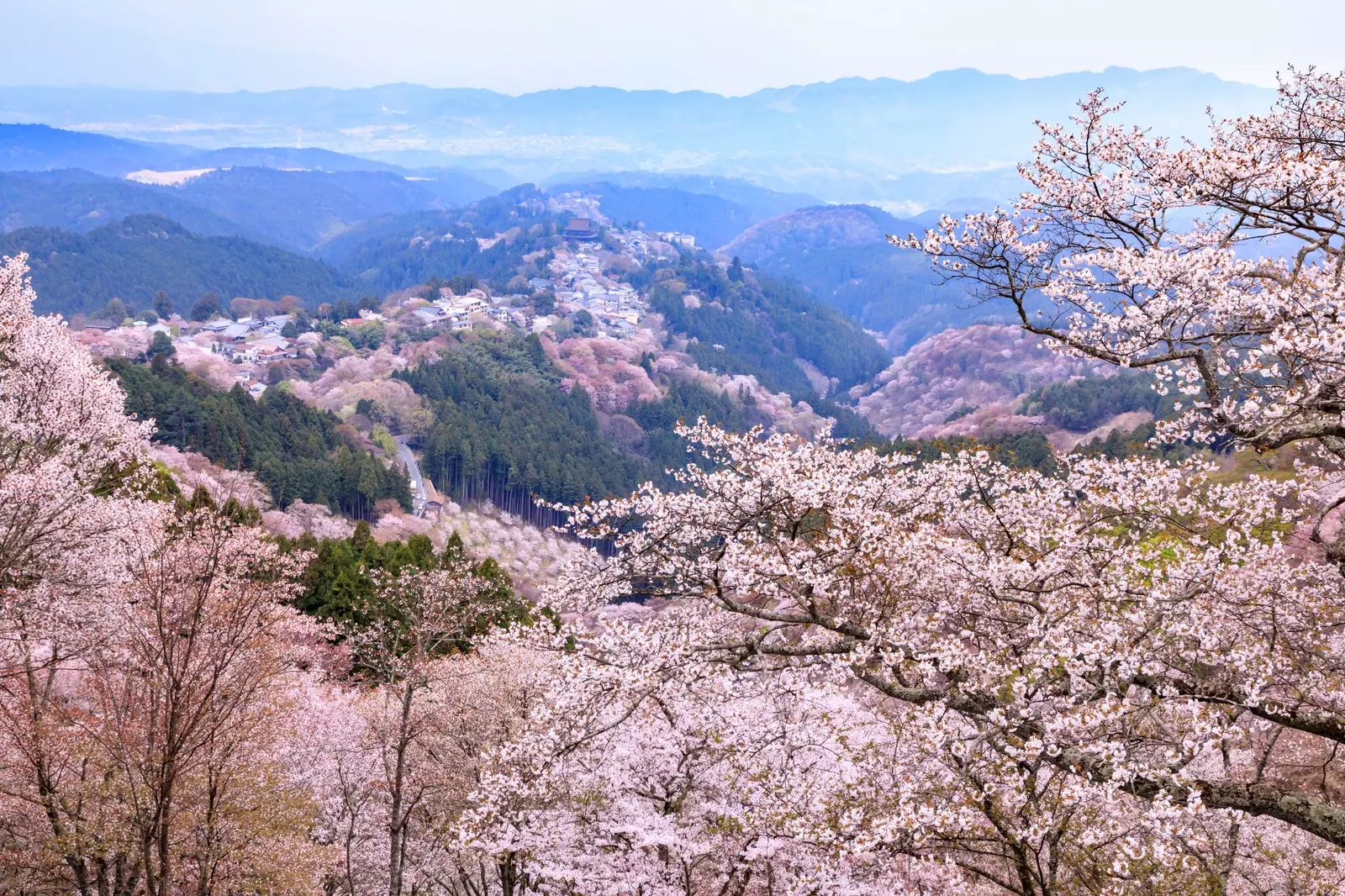
Mount Yoshino
As a whole It is a World Heritage Site and houses numerous temples and buildings of great interest. The temple Kinpusen-ji It is known as one of the places of cult of the great Shugendo, an exclusive religion from Japan.
It still retains the Zaodo pavilion today. , a wooden construction that houses three sculptures by Zao Gongen , guardian deity of Shugendo, painted blue, which are only visible to the visitor during special times. A few steps from there from the Chikurin-in garden, you can also enjoy views of the entire valley.
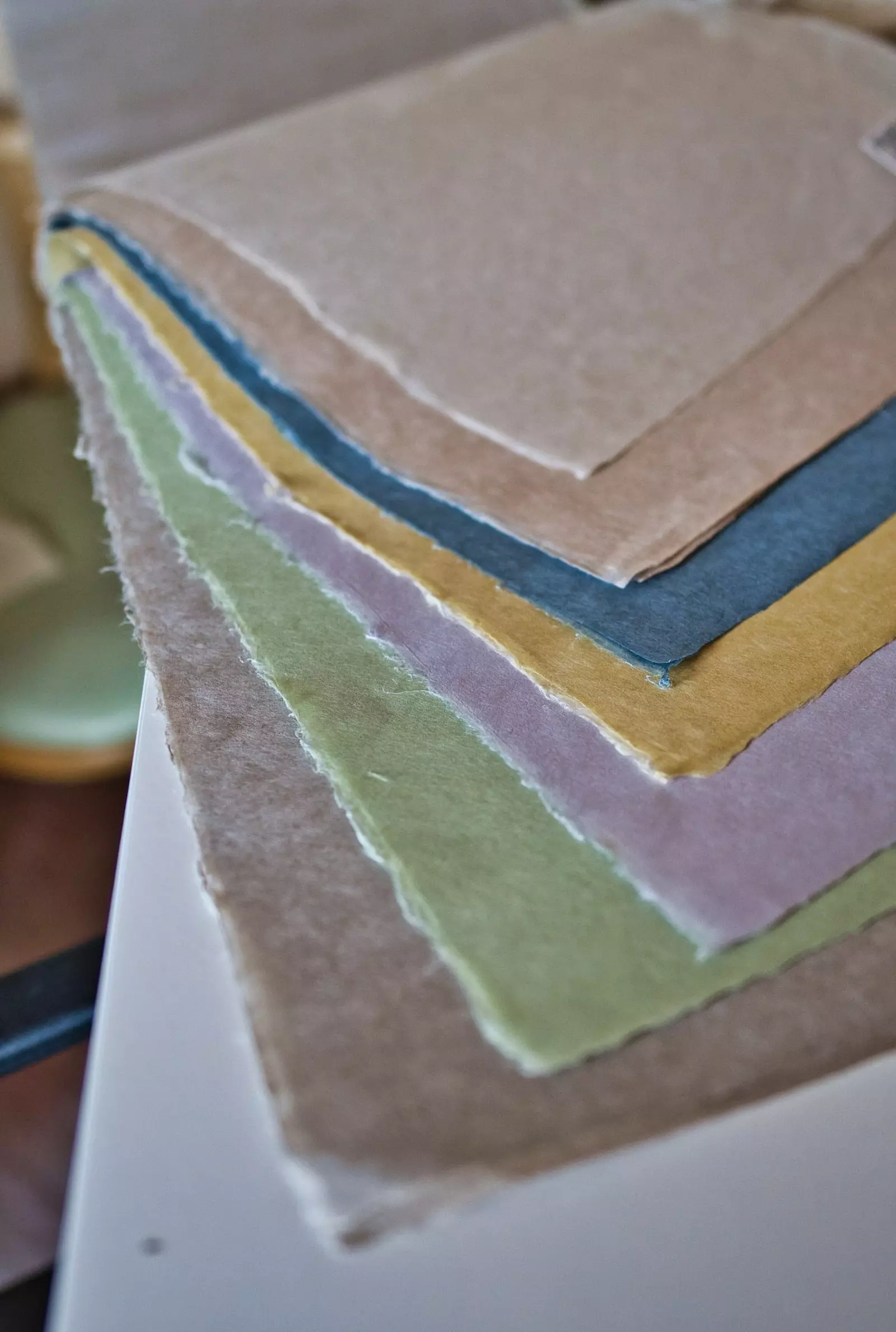
Fukunishi Washi Honpo
In addition to being a natural beauty and religious center, Mount Yoshino hosts one of Japan's traditional practices , The manufacture of washi , a type of paper made from the bark of mulberry kouzo local and the crystal clear waters of the Yoshinogaw River a. The tradition dates back to 1300 years ago and for this reason it was the place chosen by a family of artisans to settle here. Fukunishi Washi Honpo . There are already six generations at the helm of this workshop, where you can discover all the secrets of its manufacture, so exceptional that they have become suppliers of the British Museum, the Louvre or the Smithsonian . The best of all? That you can sign up for their workshops to learn how to make your own washi paper.
In addition to the city of Nara, the prefecture has important historical centers such as sakurai , a rural city that was linked to those beginnings of the political and economic life of ancient Japan. Not in vain, Ohmiwa Jinja Shrine is located there considered as possibly the oldest Shinto shrine in the whole country of which references are already found in chronicles of the 8th century. It has great differences with the rest of the temples and sanctuaries. Here there is no main room consecrated to a deity, but the worship is directed to the Mount Miwa.
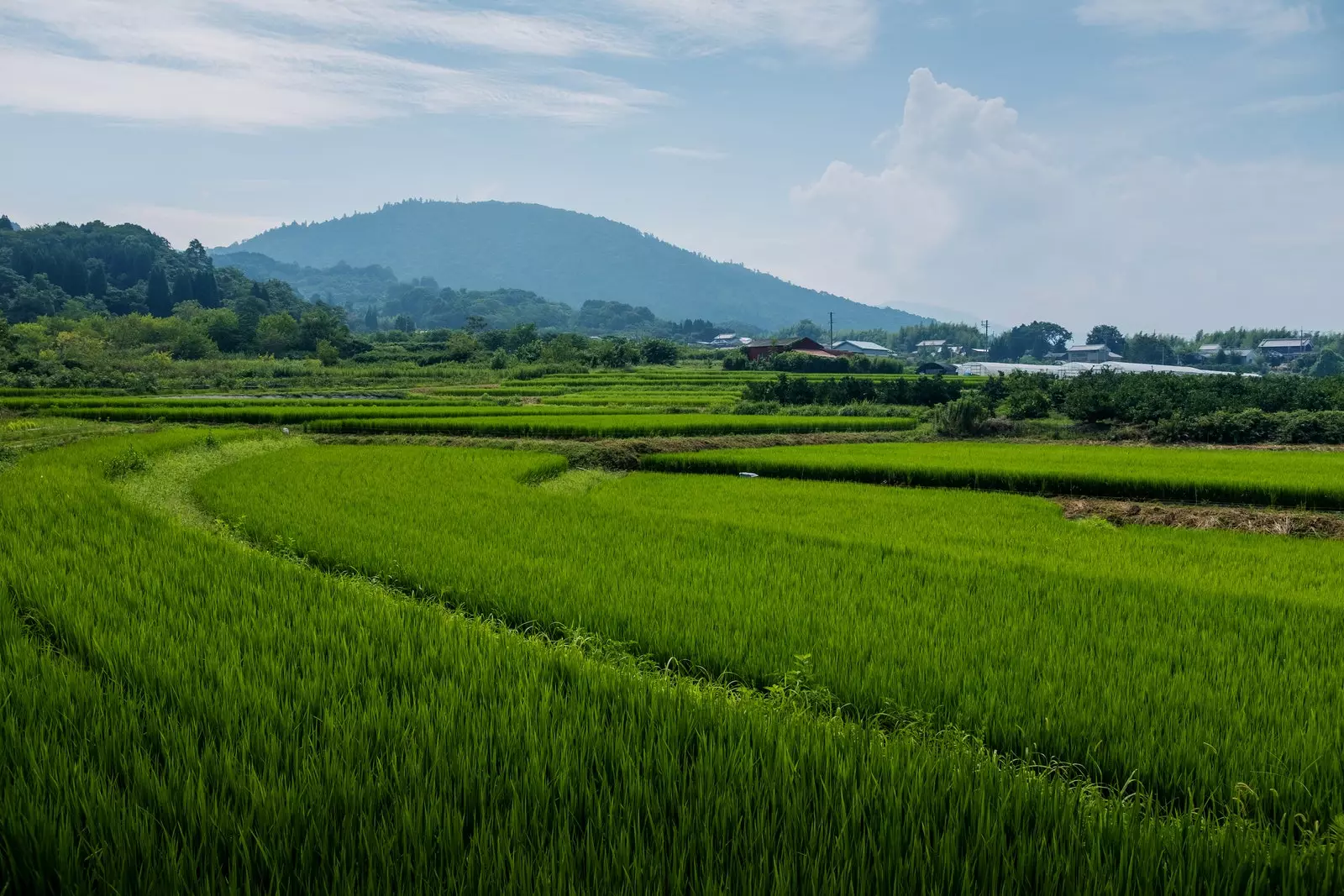
sakurai
Miwa, in the city of Sakurai , can boast of having great claims at the gastronomic level. Many claim that it was here that the Somen , wheat flour noodles that were very popular in Japan in the days before ramen or udon were introduced (although you can still enjoy them today). They are usually prepared especially in summer, when temperatures are high, because they are eaten cold accompanied by dashi or soy broth. They are also prepared in winter, as a hot dish ( nyumen ). In Miwa they can be tasted in senjutei , a restaurant specializing in hot and cold somen.
Japan's national drink, sake, finds its raison d'être in Nara Prefecture. They say that, in the sixth century, the country was plunged into an epidemic. In his dreams, a deity appeared to him and insisted that he brew sake and offer it to the temple. After this fact, they say the epidemic began to subside. Had sake saved the country? Precisely, Miwa is consecrated to the deity of sake and every November 14 the main sake brewers gather to pray for a good production . there it is Imanishi Sake Brewery , the last remaining factory in the area, operating since 1660 and the place to learn more about this drink and all the fascinating history associated with Miwa.
Wakayama and Nara prefectures have worked on the implementation of measures to ensure the safety of its visitors , As the recommended use of masks and the installation of hydroalcoholic gel points. The time will come to explore them and we will do so with the certainty that they will be safe.
